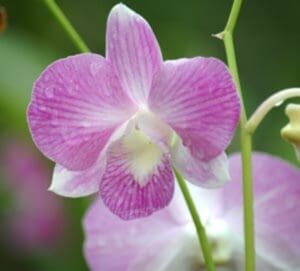Are Plants Pollution Fighters?

According to the U.S. Environmental Protection Agency, indoor air pollution poses significant health risks. We inhale mold spores and other fungi, dust mites, animal dander and volatile organic compounds (VOCs) in cleaning solutions, solvents and home furnishings (another reason to opt for organic living). The list of nasty symptoms includes:
- Eye irritation
- Nose and throat discomfort
- Headache
- Allergic skin reaction
- Breathing trouble
- Nausea and vomiting
- Fatigue
- Dizziness
- Development of cancer
Infants, the elderly, individuals with chronic diseases and residents of urban areas are at greater risk. “In addition,” the EPA notes, “the concentrations of many pollutants indoors exceed those outdoors. The locations of highest concern are those involving prolonged, continuing exposure — that is, the home, school and workplace.”
In the mid-1980s, Dr. B.C. Wolverton and fellow researchers at NASA conducted several studies to determine whether plants could halt indoor pollution and provide a natural way to deal with the problem. They determined that foliage plants in a sealed Plexiglas test chamber — housed in pots containing a commercial, nonsterile potting soil mixture — could reduce air concentrations of VOCs like formaldehyde, trichloroethylene and benzene, as well as carbon monoxide. Photosynthesis plays a role, Wolverton noted, with its “continuous exchange of gaseous substances between plant leaves and the surrounding atmosphere.” This was promising news, as formaldehyde, in particular, is particularly noxious, and it’s commonly found in foam insulation, plywood, particle board, paneling, floor coverings, carpet backing, grocery bags and paper towels, he noted.
Wolverton suggested that philodendrons and aloe vera were the most effective plants for removing formaldehyde; philodendrons and golden pothos were effective in removing benzene and carbon monoxide; and spider plants were effective in removing formaldehyde and carbon monoxide.
In 1989, NASA and the Associated Landscape Contractors of America followed up with a large-scale report, which concluded that “when plants and potting soil are constantly exposed to air containing such toxic chemicals as benzene, their capacity to continuously clean the air improves.” Wolverton ultimately concluded that “low-light-requiring houseplants, along with activated carbon plant filters, have demonstrated the potential for improving indoor air quality by removing trace organic pollutants from the air in energy-efficient buildings…Maximizing air exposure to the plant root-soil area should be considered when placing plants in buildings for best air filtration. Activated carbon filters containing fans have the capacity for rapidly filtering large volumes of polluted air and should be considered an integral part of any plan using houseplants for solving indoor air pollution problems.”
Search the Internet, and you’ll find a flurry of stories that herald NASA’s discoveries. But scientists have not been able to replicate the findings, says Kenneth Brewer, national technical and health & safety manager for Riverwoods, Illinois-based Initial Tropical Plants, the largest provider of interior landscaping, design installation and maintenance services to businesses in North America.
“Of all the benefits espoused to indoor plants, the issue of air purification is most certainly the most dubious and questionable,” he tells Organic Authority. The toxins cited are “certainly undesirable,” he says, but he “cannot, in good conscience, comment in the affirmative as to the ability of indoor plants in diminishment or elimination of these items. There is no doubt that, as part of the photosynthetic process, plants remove carbon dioxide and replace it with oxygen. However, the amount that is generated by a group of plants that is not fully photosynthetically active (in indoor conditions) might be cause for some thoughtful consideration.”
The EPA has also weighed in, stating: “Recent reports in the media and promotions by the decorative houseplant industry characterize plants as ‘nature’s clean air machine,’ claiming that National Aeronautics and Space Administration (NASA) research shows plants remove indoor air pollutants. While it is true that plants remove carbon dioxide from the air, and the ability of plants to remove certain other pollutants from water is the basis for some pollution control methods, the ability of plants to control indoor air pollution is less well established. Most research to date used small chambers without any air exchange, which makes extrapolation to real-world environments extremely uncertain. The only available study of the use of plants to control indoor air pollutants in an actual building could not determine any benefit from the use of plants. As a practical means of pollution control, the plant removal mechanisms appear to be inconsequential compared to common ventilation and air exchange rates. In other words, the ability of plants to actually improve indoor air quality is limited in comparison with provision of adequate ventilation. While decorative foliage plants may be aesthetically pleasing, it should be noted that overdamp planter soil conditions may actually promote growth of unhealthy microorganisms.”
So, what’s the bottom line for those of us who practice organic gardening?
Plants certainly can’t hurt your environment. As the EPA cautions, don’t allow soil to become too damp, or you risk mold and fungal development. Also recognize that plants serve another important function: They reduce stress. Multiple studies conclude that by cheering up our living and work areas, plants help us cope with fatigue and tension, while improving our mood. Can’t argue with that!

